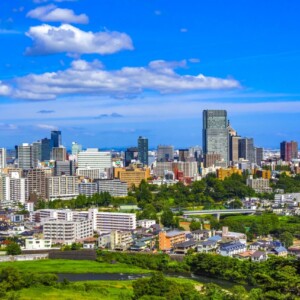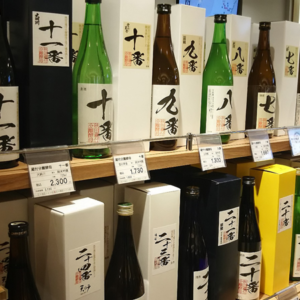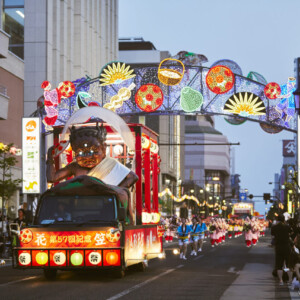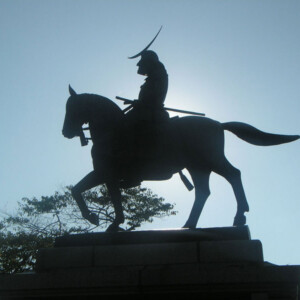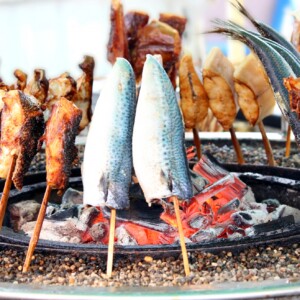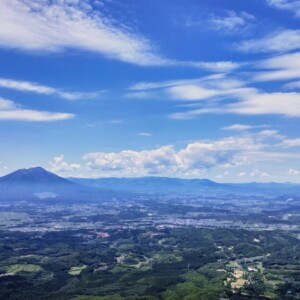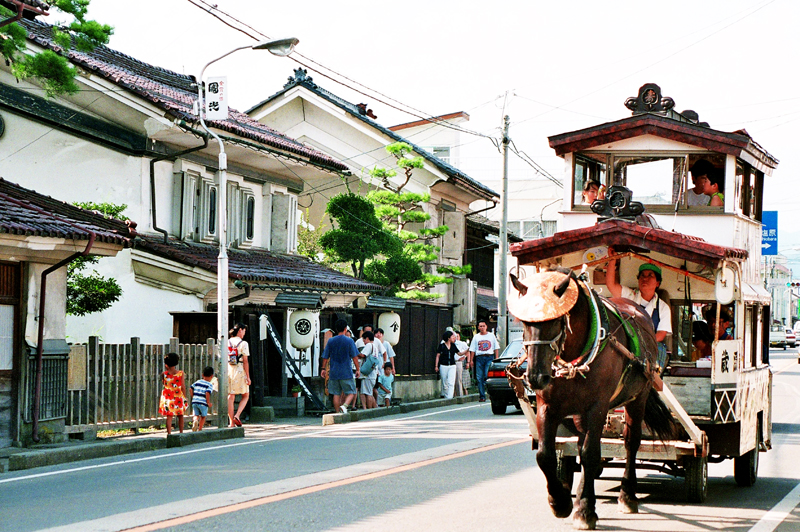
Kitakata, a town of barns with over 4,000 existing barns [Fukushima Prefecture]
table of contents
- 1 Kitakata was the rice producing region of the Aizu domain.
- 2 Recognizing the importance of the storehouse left unburned by the Great Fire of the Meiji era
- 3 The Kano Copper Mine made Kitakata prosperous.
- 4 Kitakata’s storehouses have a variety of architectural styles and uses.
- 4.1 ``Kitakata Kura no Sato'' where nine storehouses were relocated
- 4.2 Kitakata Kuranosato<Information>
- 4.3 Higashimachi Kurayashiki Kaiyokan is now a tourist information center.
- 4.4 Higashimachi Kurayashiki Kaiyokan<Information>
- 4.5 ``Yamatogawa Sake Brewery Northern Fudokan'' is lined with breweries from the Edo, Taisho, and Showa eras.
- 4.6 Yamatogawa Sake Brewery Northern Fudokan <Information>
- 4.7 ``Wakaki Shoten Shimagaki no Kurazashiki'' protects the living space from warehouse fires
- 4.8 Wakaki Shoten Shimagaki Kurazashiki<Information>
- 5 lastly
When you think of Kitakata City, Fukushima Prefecture, the first thing that comes to mind is ramen. It is said to be one of Japan's three major ramen, along with Sapporo ramen and Hakata ramen.
It has a long history, and its origins date back to the late Taisho era, when a young man from China ran a food stall and sold Chinese noodles. After World War II ended, the number of ramen shops increased due to the repatriation of people from China who returned to Kitakata.
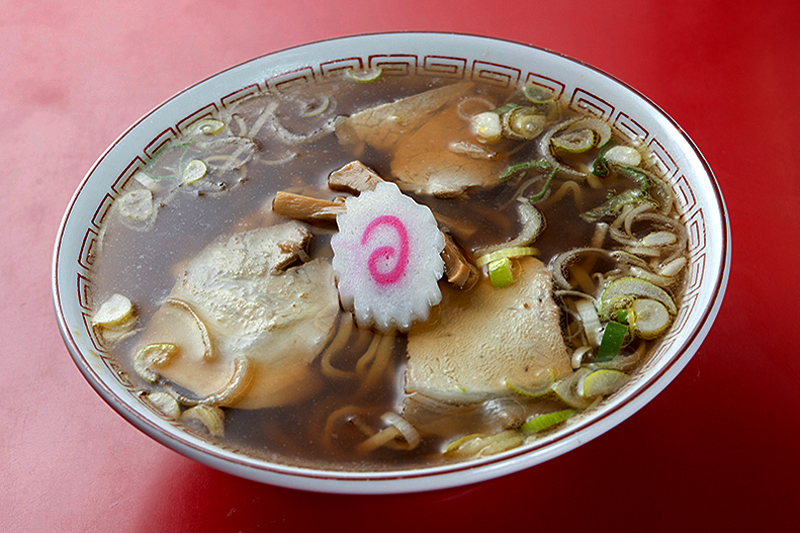
In the 1980s, local governments began to improve old townscapes, and a boom in walking around the old townscape began.
Kitakata City is one such city, and its landscape lined with warehouses has been featured in photo books and on TV as "Kitakata, the city of warehouses," and many tourists have come to visit. At that time, there was a nationwide ramen boom, using local noodles and a soy sauce-based soup made with famous water originating from Mt. Nichiu Iimori (1,595 m above sea level), which towers over the border with Yamagata Prefecture. Takitakata's ramen is a big hit with tourists.
The name of Kitakata ramen gradually spread around Tokyo due to word of mouth that ``Kitakata ramen was delicious.''
Kitakata was the rice producing region of the Aizu domain.
Kitakata was called "Kitagata" because it was located north of Aizuwakamatsu, the center of Aizu, and was an agricultural and mountainous village with several villages.
Aizu was founded by Yoritomo Sawara, who achieved great military fortune in the Oshu Conquest (1189), a battle to subjugate the Oshu Fujiwara clan, which boasted a powerful force in the Tohoku region. It was given by Yoritomo as a territory. Later, through the Shingu clan, the Ashina clan came to rule all of Aizu during the Muromachi period. The Ashina clan developed the villages in the north and opened markets in some of them.
In the Edo period, the lord of Aizu, Gamo Ujisato, encouraged the development of new fields in the north as well as the development of the castle town. In the northern part of the country, which became a rice-producing region, rice production increased, and due to the availability of high-quality water, sake brewing also flourished, and the production of miso and soy sauce also began. It was also around this time that warehouses began to be built for brewing sake, miso and soy sauce.
During the Edo period, the feudal lords changed rapidly after Ujisato Gamo, from Kagekatsu Uesugi to Hideyuki Gamo to Yoshiaki Kato to Akinari Kato, but in 1643 Hoshina Masayuki Hoshina became the lord of the domain and the political situation became stable. However, at the end of the Edo period, the Boshin War (1868-1869) between the Edo shogunate's Aizu clan and the new government forces broke out, and many houses and storehouses were burned down in the northern region as well.
Recognizing the importance of the storehouse left unburned by the Great Fire of the Meiji era

In 1875 (Meiji 8), five northern villages, including Koarai Village, Odazuki Village, and Tsukahara Village, merged to form Kitakata Town. Kitakata Town gradually revived with its brewing industry, lacquerware industry, and sericulture, and many storehouses were built, but in 1880 (Meiji 13), a large fire destroyed about 170 houses in the center of town. happen. At that time, many houses were destroyed by fire, but only the storehouse survived, and its importance began to be recognized.
The Kano Copper Mine made Kitakata prosperous.
In the latter half of the Meiji period, a copper mine (Kano Copper Mine) was discovered nearby and began full-scale operation. The Kano Copper Mine had the third largest output in Japan at the time, so many workers flocked to the mine, and the railway was opened, making Kitakata town very lively. Many warehouses were built during this period.
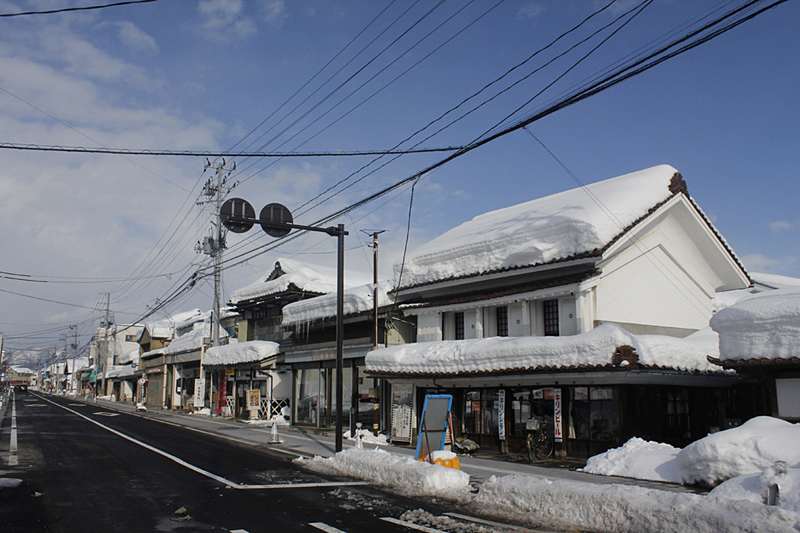
There are still many breweries that can be visited in the former Koarai village area and the former Odatsuke village area, which are located in the center of Kitakata city, where the market has stood since ancient times, but in Kitakata city as a whole, there are still more than 4,000 breweries, including those that are not open to the public. It seems that the storehouse remains. The townscape of the Odatsuke area has been designated as a national traditional building preservation district.
Kitakata’s storehouses have a variety of architectural styles and uses.
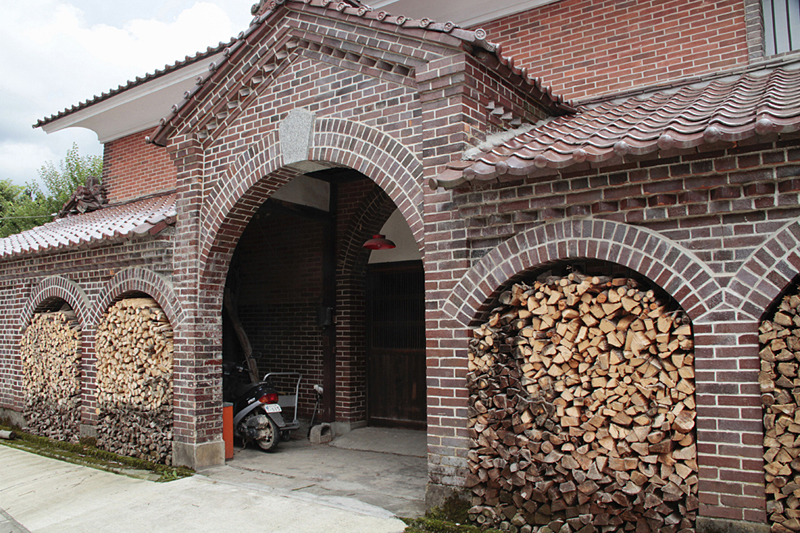
Kitakata's storehouses are unique in that they are located not only in merchant houses in urban areas, but also in rural areas. This is because the need for storehouses was felt after the great fire, and during the Edo period, when farmers wanted to build a storehouse, they had to request permission from the magistrate, but since the Meiji period, anyone can freely build a storehouse. As they became able to do so, they competed to build storehouses.
The architectural style of storehouses is generally white-walled storehouses, but in Kitakata there are a variety of styles, including black plaster walls, mud walls, and brick construction. What is especially unusual is that brick construction, which is common in factories, is also common in ordinary farmers.
``Kitakata Kura no Sato'' where nine storehouses were relocated
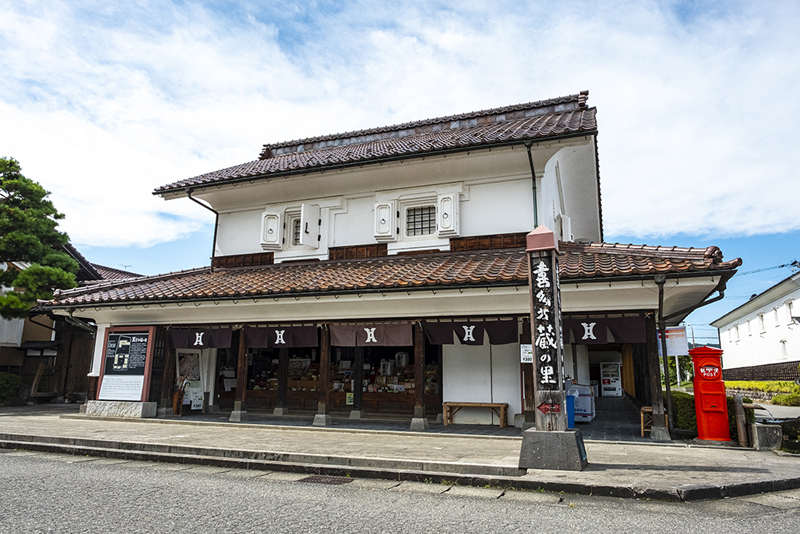
``Kitakata Kura no Sato'' is located in Kitakata roadside station, where various types of warehouses from Kitakata that are no longer in use are relocated and exhibited.It was built with the purpose of passing on the culture of kura construction to future generations. It is a theme park. The relocated warehouses are the former Inoue family grain storehouse, the former Karahashi family miso brewery, the zashiki storehouse, the Kategura storehouse, the Inomata family grain storehouse, the Gogashira residence, and the former Toshima family residence. (Fukushima prefecture-designated important cultural property)," "Former Kabuki family storehouse," "Former Tokairin family sake brewery," "Kimoiri mansion, Former Teshirogi family residence (Fukushima prefecture-designated important cultural property) )'', it is clear how important storehouses were in Kitakata.
Kitakata Kuranosato<Information>
- Facility name: Kitakata Kuranosato
- Address: 109 Oshikiri, Kitakata City, Fukushima Prefecture 966-0094
- Phone number: 0241-22-6592
- Opening hours: 9:00-17:00
- Admission fee: General, 400 yen for university students, 200 yen for elementary, junior high and high school students, free for under elementary school students
- Closed: December 29th to January 1st
- Official URL: Roadside Station Kitanosato
Google Maps
Higashimachi Kurayashiki Kaiyokan is now a tourist information center.
Higashimachi Kurayashiki Kaiyokan is a warehouse that was used as the residence of the former Igarashi family, who led the Kitakata industry in raw silk production and silk reeling. Currently, it has been donated to Kitakata City, has been renovated, and is used as an Odatsuke tourist information center and free space. The construction date is the late Edo period.
Higashimachi Kurayashiki Kaiyokan<Information>
- Facility name: Higashimachi Kurayashiki Kaiyokan (Kurayashiki Odatsuki Tourist Information Center)
- Address: 4088-1 Higashimachi, Kitakata City, Fukushima Prefecture 966-0051
- Phone number: 0241-22-6592
- Opening hours: 10:00-17:00
- Admission fee: Free
- Closed: Late March to November
- Official URL: Higashimachi Kurayashiki Kaiyokan
Google Maps
``Yamatogawa Sake Brewery Northern Fudokan'' is lined with breweries from the Edo, Taisho, and Showa eras.
``Yamatogawa Sake Brewery Northern Fudokan'' opens to the public the three generations of Yamatogawa Sake Brewery, which was founded in the mid-Edo period and is no longer in use: ``Edo Gura,'' ``Taisho Gura,'' and ``Showa Gura.''
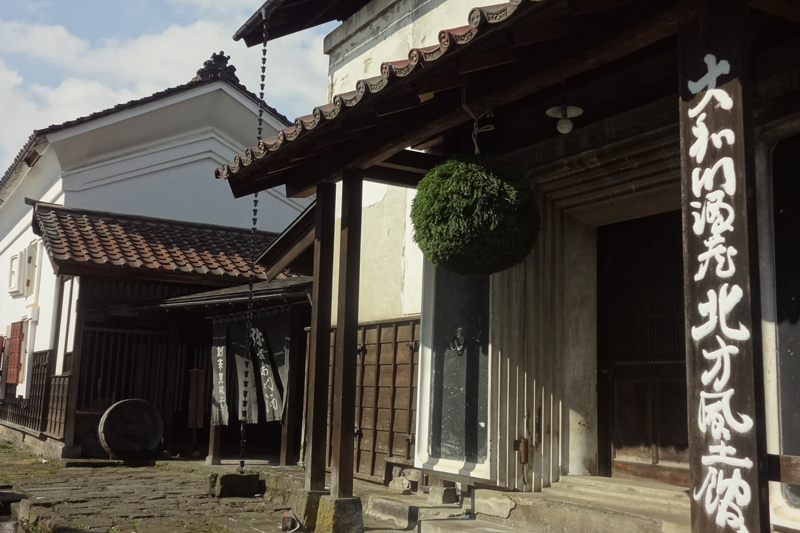
“Edo Kura” is a sake brewery that was built during the Edo period. Taishogura was originally lined with tanks for storing and aging finished sake. “Showakura” is a warehouse built in 1929 (Showa 4), and is currently used as a concert hall and various event spaces.
Yamatogawa Sake Brewery Northern Fudokan <Information>
- Facility name: Yamatogawa Sake Brewery Northern Fudokan
- Address: 4761 Teramachi, Kitakata City, Fukushima Prefecture 966-0861
- Phone number: 0241-22-2233
- Opening hours: 9:00-16:30
- Admission fee: Free
- Closed days: Open every day
- Official URL: Yamatogawa Sake Brewery
Google Maps
``Wakaki Shoten Shimagaki no Kurazashiki'' protects the living space from warehouse fires
Wakaki Shoten is a miso and soy sauce manufacturer founded in the Edo period, and many of the buildings built from the Meiji period to the early Showa period remain, including stores and brick warehouses.
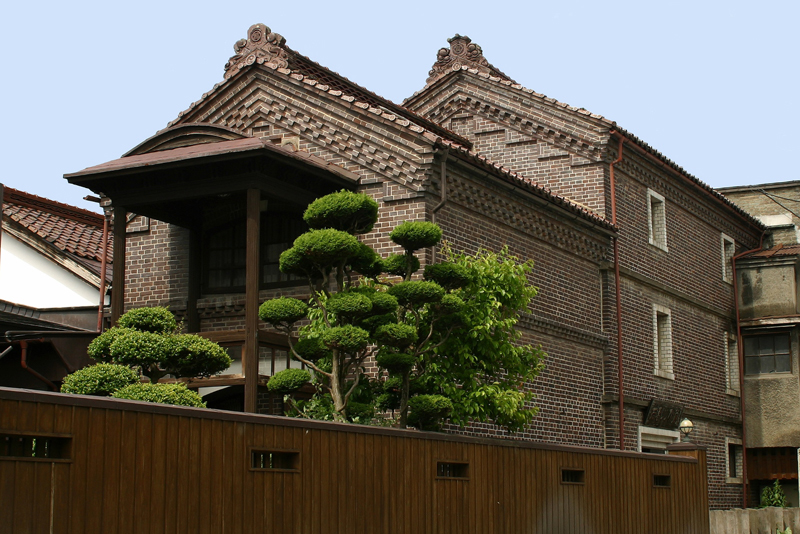
``Shimagaki Kura Zashiki'' has a brick exterior, and the interior is a Japanese-style room, which is a zashiki kura (Japanese-style room), and the interior is entirely made of persimmon wood. You cannot go inside, but you can view it from outside. The Zashikigura, along with the store, working warehouse, and brewery, is a registered tangible cultural property of the country.
Wakaki Shoten Shimagaki Kurazashiki <Information>
- Facility name: Wakaki Shoten Shimagaki no Kurazashiki
- Address: 3-4786, Kitakata City, Fukushima Prefecture 966-0817
- Phone number: 0241-22-0010
- Opening hours: 9:00-17:00
- Admission fee: Free
- Closed: January 1st
- Official URL: Wakaki Shoten Shimagaki no Kurazashiki
Google Maps
lastly
In Kitakata City, there are also other buildings with various architectural styles, such as Sasa Masamune Sake Brewery, Matsumotoya, Inoue Partnership Company, Yabe Family Residence, Old Yamatoki Kimono Store, Old Shimashin Shoten, and Kanboku Shoten. There are many warehouses that have been designated as nationally registered tangible cultural properties, such as the Wakana Family Residence, the Ueno Family Residence, and Shima Keien.
Why not take a leisurely stroll through Kitakata, a warehouse town that feels like you have traveled back in time? Kitakata ramen is delicious and there are many sake breweries.
*Kitakata's representative storehouse, the nationally registered tangible cultural property "Former Kai Family House", will undergo major renovation work from April 2023. Construction is expected to take several years, and tours will not be permitted during this time.
Kitakata Tourism and Products Association <Information>
- Facility name: Kitakata Tourism and Products Association
- Address: 7244-2 Mishimizu Higashi, Kitakata City, Fukushima Prefecture 966-0814
- Phone number: 0241-24-5200
- Official URL: Kitakata Tourism and Products Association



![The disappearing super local line "Nicchu Line" [Fukushima Prefecture] 04_MG_8461](https://jp.neft.asia/wp-content/uploads/2024/07/04_MG_8461-150x150.jpg)
![Introducing a difficult train that even staff members of Inawashiro express trains with three destinations [Fukushima Prefecture] 30681041_m](https://jp.neft.asia/wp-content/uploads/2024/10/30681041_m-150x150.jpg)
![[Fukushima Prefecture] 5 Famous Waters in Fukushima Prefecture! Delicious water that supports the recovery of “Utsukushima Fukushima”! Ukon Seisui](https://jp.neft.asia/wp-content/uploads/2023/02/8606bd2d94c5420d999758fe4de7a638-150x150.jpg)
![[Kitakata City, Fukushima Prefecture] Is there a hot spring right in front of “Kitakata Ramen”? Open for 3 hours? A hidden delicious restaurant is located on the prefectural border! PXL_20230124_032310587.PORTRAIT](https://jp.neft.asia/wp-content/uploads/2023/02/PXL_20230124_032310587.PORTRAIT-150x150.jpg)
![[Fukushima Prefecture] What is Japan's third generation manju, "usukimanju"? Introducing Kashiwaya's famous sweets that continue to be loved by locals 22766289_l](https://jp.neft.asia/wp-content/uploads/2021/11/22766289_l-150x150.jpg)
![[Fukushima Prefecture] What is Aizu's New Year's dish "Kozuyu"? Local flavors born of hospitality 4720211_m](https://jp.neft.asia/wp-content/uploads/2021/12/4720211_m-150x150.jpg)
![[Aizuwakamatsu City, Fukushima Prefecture] Aizu Higashiyama Onsen Mukaitaki, a cultural property inn, where you can feel at ease with Japanese warmth and warm hospitality. 0d2c7a93530a3aaff6e906a495e42d14](https://jp.neft.asia/wp-content/uploads/2022/09/0d2c7a93530a3aaff6e906a495e42d14-150x150.jpg)
![[History of Hachirogata Reclamation 2] How was the reclamation ground created? [Hachirogata Town, Akita Prefecture] f3caff848099ab5806b64ce9b80dfc4f](https://jp.neft.asia/wp-content/uploads/2024/07/f3caff848099ab5806b64ce9b80dfc4f-150x150.jpg)
